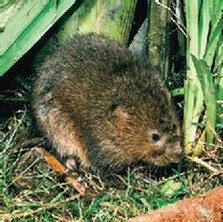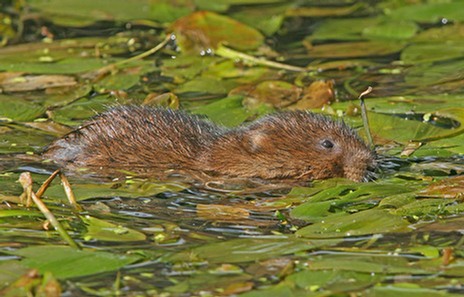

Biodiversity
Action
Plan
Water Vole Conservation
There is potential through local conservation measures to increase the numbers and distribution of Water Vole in Barnsley.
Factors causing loss or decline
- Loss of suitable bank-side habitats: as a result of engineering, bank-side development or over-zealous vegetation clearance.
- Population fragmentation: Water Vole populations are being isolated by new roads, canalisation, development and loss of habitat.
- Water level fluctuations: Water Voles need slow changes in water level or refuge areas to retreat to when water levels rise quickly.
- Predation: the spread of non-native mink throughout the UK has significantly increased the severe decline in Water Vole numbers
- Water quality: contamination of water by pesticides, heavy metals, slurry and sewage may have contributed to the decline.
- Poisoning: indirect poisoning of Water Voles by Brown Rat poison.
Good practice in conservation management for Water Vole:
- Ensuring that water quality is maintained or improved
- Maintaining and enhancing bank and vegetation structure
- Providing slow-moving but relatively deep water course
- Ensuring that there are areas for Water Vole to retreat to in the event of flooding and that water levels do not rise too quickly
- Avoiding disturbance
- Controlling the presence and numbers of Mink
- Creating new Water Vole habitat near existing populations to allow populations to expand and colonise areas
- Creating and maintaining a buffer zone along the water course not less than 10 metres and not less than 50 metres around the colony .

Legal protection.
Water Voles are fully protected under Schedule 5 of the Wildlife & Countryside Act 1981.
It is an offence whether on purpose or by not taking enough care to
- capture, kill or injure a Water Vole
- damage, destroy or block access to their places of shelter or protection
- disturb them in a place of shelter or protection
- possess, sell, control or transport live or dead water voles or parts of them.
It also has the same protection as other mammals from deliberate cruelty under the Wild Mammals Protection Act.
Water Vole is a Section 41 species of principal importance for conservation and as such need to be taken into consideration by any public body in managing their estate. NERC Act (2006))
Links
Standing Advice [surveys and mitigation]
Mammal Society information signs
PTES information
Associated Local Priority Habitats
- Rivers and streams - slow moving
- Ponds (including canals, dikes, etc)
- Floodplain Grazing Marsh

Water Vole